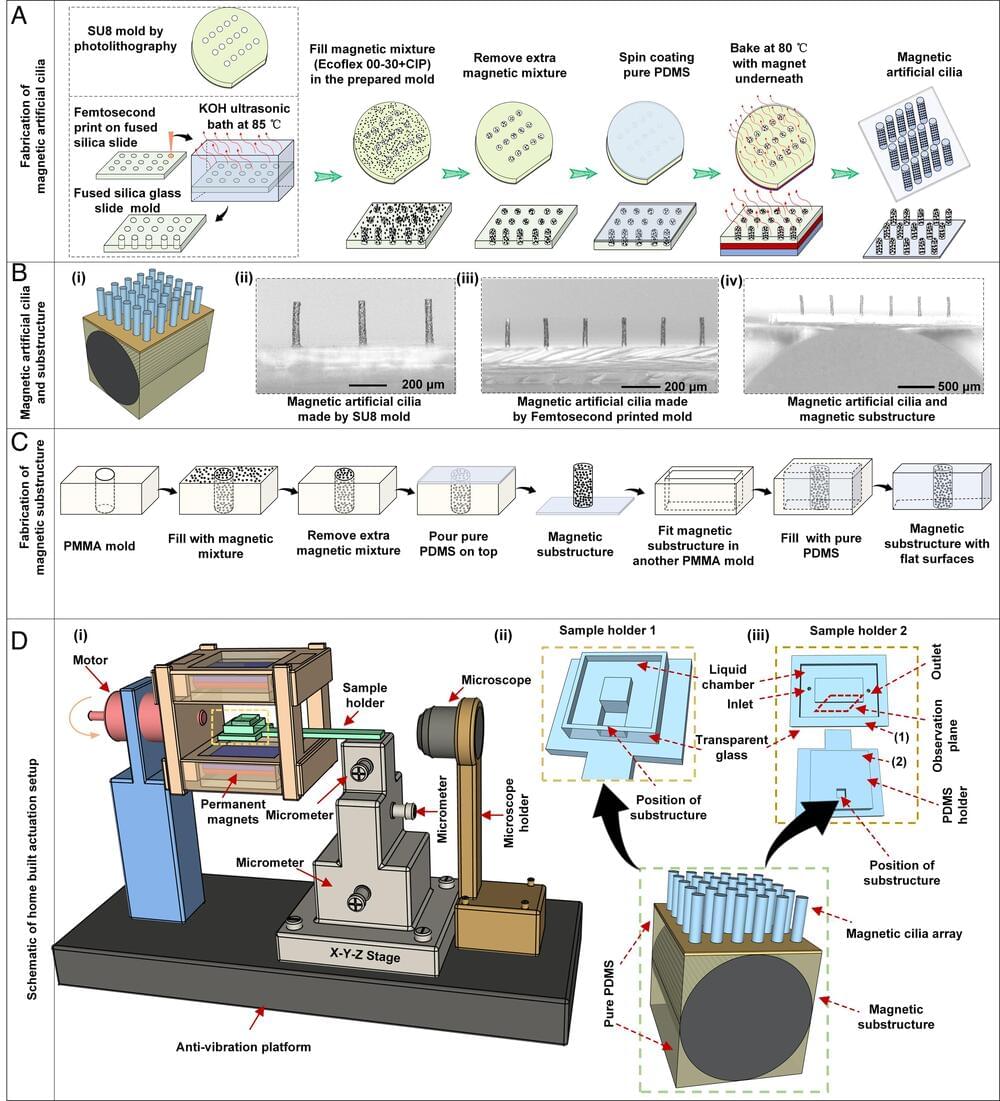A small team of engineers at Eindhoven University of Technology in the Netherlands, working with a colleague from the Max Planck Institute for Intelligent Systems in Germany, has found a way to create tiny artificial cilia that work at the microscale. Their study is reported in the Proceedings of the National Academy of Sciences.
Cilia are tiny appendages that microscopic organisms use to move through a fluid. Prior research has shown that they are efficient—some paramecia are able to move at a rate of 10 times their own length per second. Prior research has also shown that cilia also move fluid. In the human lung, they work to clear away mucus.
Because of their usefulness, scientists have been studying cilia looking for a way to replicate them for use in desired applications. Such efforts have until now been stymied by the problem of creating working cilia at the microscale. In this new effort, the researchers have overcome such problems and created the first artificial microscale working cilia.
